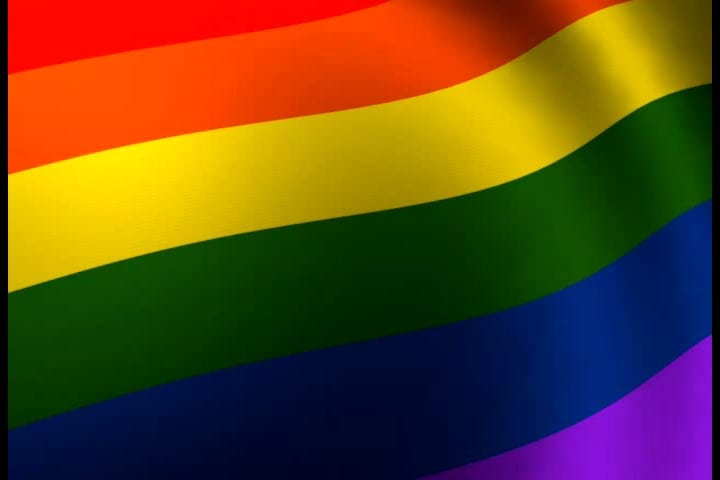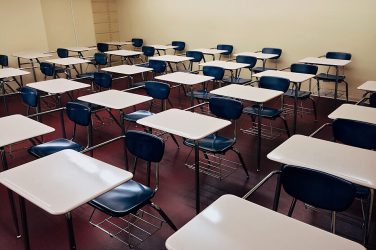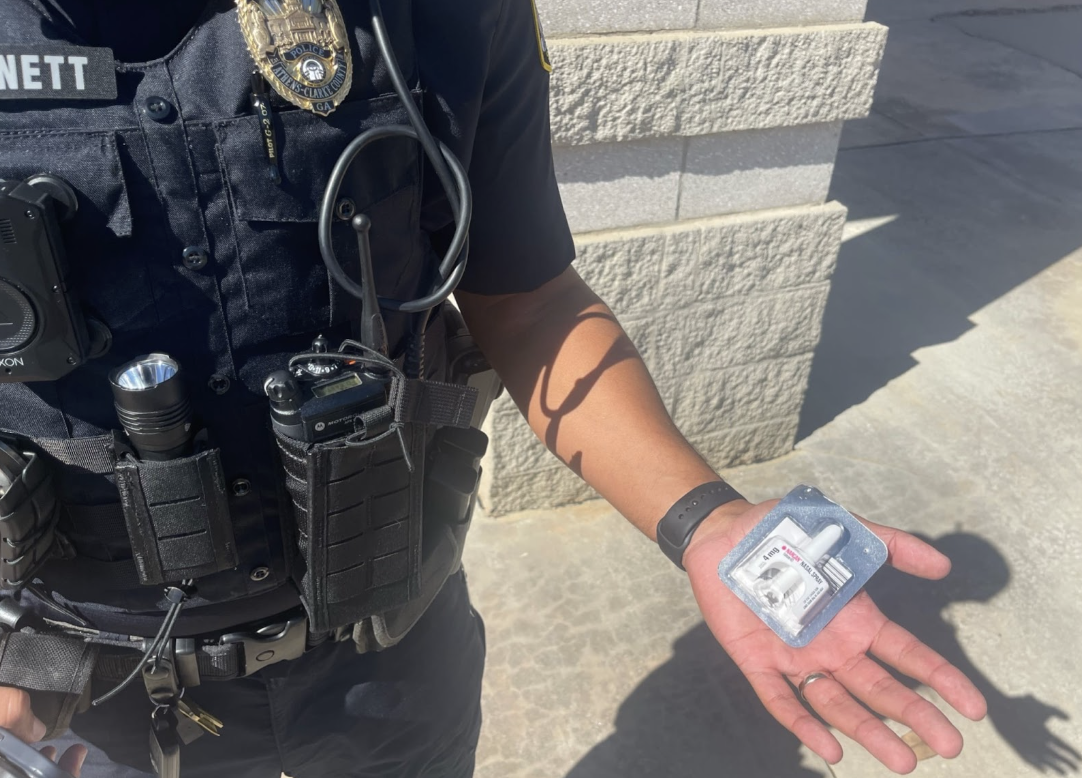This article originally appeared in Georgia Health News.
Riley Kirkpatrick realized he was transgender when he was a teenager.
Kirkpatrick, born and raised as a female, says he was always very masculine and was often described as a “tomboy.”
It was around the time of his realization — at age 14 — that he began using drugs.

Drug use felt normal to him, he says. In the Olympia, Wash., area, in the 1990s, using drugs and going to clubs were normal for an LGBTQ teen. But getting into drug recovery? That wasn’t as easy as it sounds.
LGBTQ individuals — those who identify as lesbian, gay, bisexual, transgender or queer — often face challenges such as disproportionately high rates of substance abuse and mental health conditions.
The Trevor Project, the world’s largest suicide prevention and crisis intervention organization for LGBTQ young people, recently surveyed about 40,000 LGBTQ people across the United States who were ages 13-24 to gain insight regarding mental health, among other topics.
A key finding was that 40 percent of the respondents said they had seriously considered suicide in the past year. While troubling, those statistics weren’t a shock to public health experts.
“I think we know that LGBTQ youth are a vulnerable population and I think we could do so much more to support them,” says Jessica Bernacki, a licensed clinical psychologist at the UCLA Gender Health Program, who was not a part of the Trevor Project research team. “The alarmingly high rates of suicidality and self-harm and housing insecurity were concerning,” she says, “and really highlighted for me the importance of the work we are doing in trying to help support gender-diverse youth and their families.”
Historically, many medical professionals looked at homosexuality and gender variance as illnesses that needed treatment, according to an article published in the 2019 issue of “American Psychologist.” LGBTQ people struggled to find appropriate care for decades.
In fact, until late 1973, homosexuality was considered a mental disorder by the American Psychiatric Association (APA), a national professional organization that accredits U.S. psychiatrists. The classification of homosexuality as a “disease” ended in late 1992 and was removed from the International Classification of Diseases. Most recently, the World Health Organization removed the term “transsexualism” — considered a slur by some people in the LGBTQ community — from the International Classification of Diseases in 2018.
Still, the Trevor Project’s report found 46 percent of LGBTQ youth reported that they wanted counseling from a mental health expert but weren’t able to get it.
Bernacki says that percentage highlights the need for better access to health care.
“Improving behavioral health coverage is essential,” Bernacki says. “There’s just getting mental health services covered and then there’s also getting access to a knowledgeable provider.”
The results of the Trevor Project’s survey align closely with some of the most recent data from the Centers for Disease Control and Prevention from 2015.
Lesbian, gay and bisexual youth are at greater risk for depression and suicide, and nearly a third had attempted suicide at least once in the prior year compared to 6% of their heterosexual peers, according to the CDC.

Paula M. Neira, the clinical program director of Johns Hopkins Center for Transgender Health and a fellow of the American Academy of Nursing, says “that increased amount of anxiety and depression are all tied to discrimination and stigma. “When LGBTQ youth are in a supportive, affirming environment, their suicidality drops. So, the takeaway message is that we should be providing that supportive and welcoming environment.”
Hoping for Family Support
So, who should be providing that support to LGBTQ youth? Families — including parents and guardians — as well as schools, government organizations and faith groups, Neira says.
“All of that plays into providing that supportive environment,” she says.
Another key finding from the survey was that 86 percent of respondents said recent politics negatively affected their well-being.
Both Bernacki and Neira mentioned the potential impact of court rulings and other government decisions with regard to stigmatization of LGBTQ people.
“Everybody’s wondering what’s going to happen if the Supreme Court calls the Affordable Care Act unconstitutional, because it was the Affordable Care Act that really expanded the access for queer folks, particularly transgender and gender-diverse people to be able to get health insurance in the first place,” Neira says. “If minors can’t access health care because their parents are queer, that’s going to impact them.”
Neira says the current political environment isn’t helping LGBTQ health, although there have been some improvements.
We’ve had a great Supreme Court decision advancing employment rights — the first time the Supreme Court’s ever spoken about transgender rights — but the next battle’s already being set up,” Neira says.
Two Supreme Court justices — Samuel Alito and Clarence Thomas — made a statement in early October regarding the 2015 landmark decision to declare same-sex marriage a constitutional right. The two justices said the ruling had allowed religious opponents of same-sex marriage to be labeled “bigots” by government.
The remarks from Alito and Thomas came in the context of the court’s refusal to hear the case of a former Kentucky county clerk, Kim Davis. In 2015, Davis refused to issue marriage licenses to couples of the same sex and was later sued. (The two justices, while criticizing the 2015 decision, agreed with other court members not to hear Davis’ case.)
Although Bernacki says she believes society in general has come a long way in understanding gender and sexual orientation diversity, it still has a long way to go.
“During 2020, in particular, I think it’s been a year where there have been a lot of additional stressors, whether it’s the political climate or the COVID pandemic,” Bernacki says. “I think they’re just additionally weighing on everyone, but also probably compounding the stressors of a more vulnerable population.”
Many Vulnerabilities
Kirkpatrick began medically transitioning in his ’20s. Now 40, he says that when he was a youth, he had an “intense history” with regard to two areas the LGBTQ community sees as health disparities: mental health and substance abuse.
Now, Kirkpatrick is an advocate for addiction recovery, and works with LGBTQ young people in Georgia. He started the Athens Queer Collective a few years ago, and also facilitates both an LGBTQ youth group that meets in-person once a month and a Facebook group for sexual minority teenagers.
Although his organization is a social group and not a support group, Kirkpatrick says he quickly learned the importance of having a mental health professional as part of it.
“[We found out] kids were engaging in some pretty extreme self-harm behaviors,” he says. “So, we always have at least one mental health professional. We have two right now, actually.”
For Kirkpatrick, seeing these young people struggling was difficult to come to terms with.
“I just wanted to create space for queer youth,” he says. “I had no idea that they’d [be engaging in self-harm behaviors]. It was really hard.”
Parents and families play a huge role in protecting LGBTQ youth, too, experts say.
Obviously, families have to stop picking on their queer kids,” Neira says.
In fact, having just one accepting adult can make the difference in an LGBTQ-identifying young person, says Rob Todaro, press secretary for The Trevor Project.
“According to our 2020 National Survey, LGBTQ youth with access to at least one LGBTQ affirming space were significantly less likely to attempt suicide than those who do not have access to one,” Todaro says. “That’s why it is imperative for each and every one of us to actively foster the creation of safe, affirming environments where LGBTQ students can thrive.”
A crucial step is changing school structures, Neira says.
“You have to have anti-bullying programs — structures in place that recognize that bullying because of someone’s child’s sexual orientation or gender identity is wrong. And, unfortunately, too many school districts still either don’t recognize this as a problem or they turn a blind eye to it,” she says.
Madeline Laguaite is a freelance journalist and a health and medical journalism graduate student at the University of Georgia. She is particularly interested in LGBTQ health and public health. She has a public/professional Twitter at @MLaguaite and a portfolio at www.madelinelaguaite.com.









Show Comments (0)